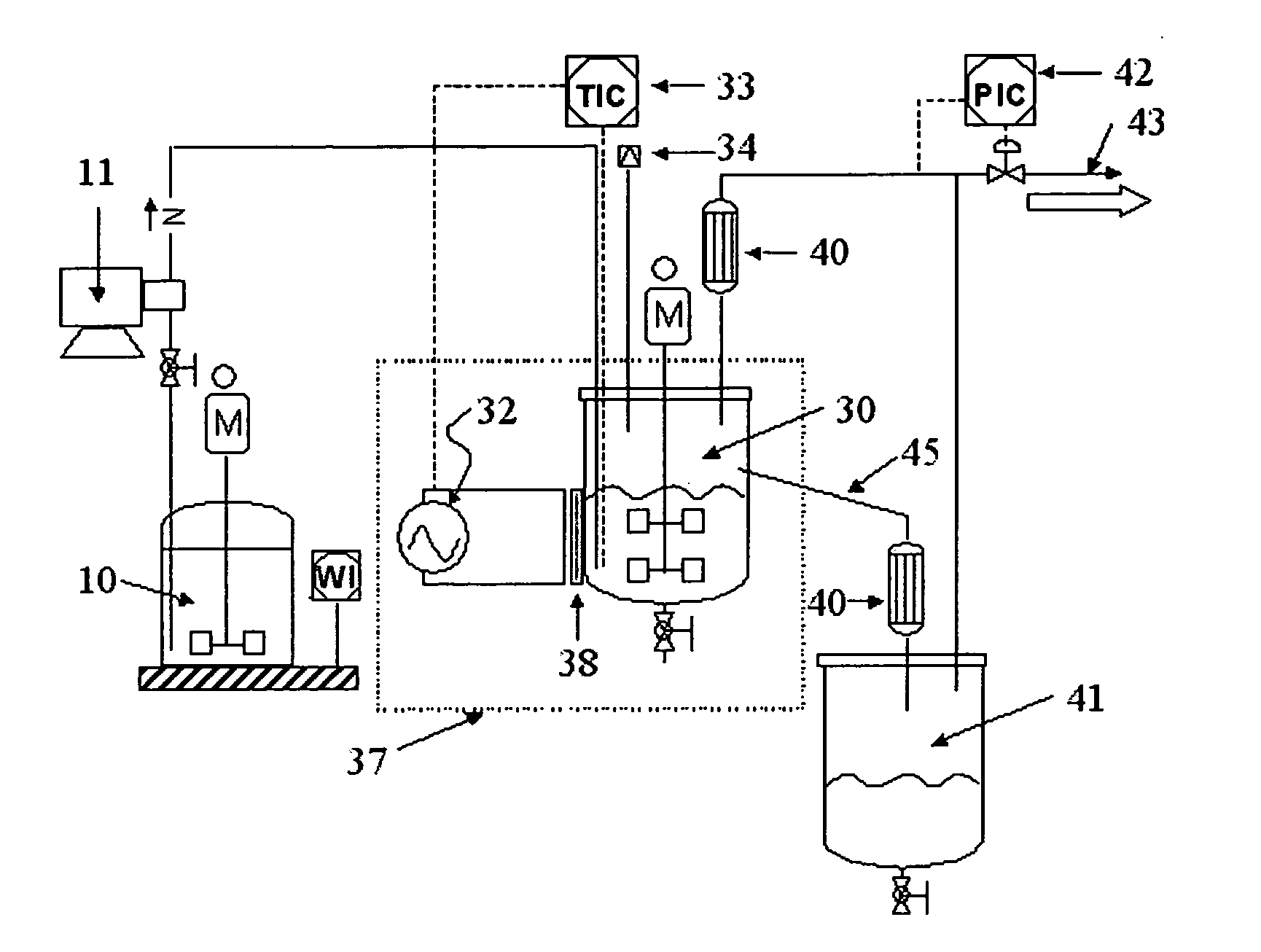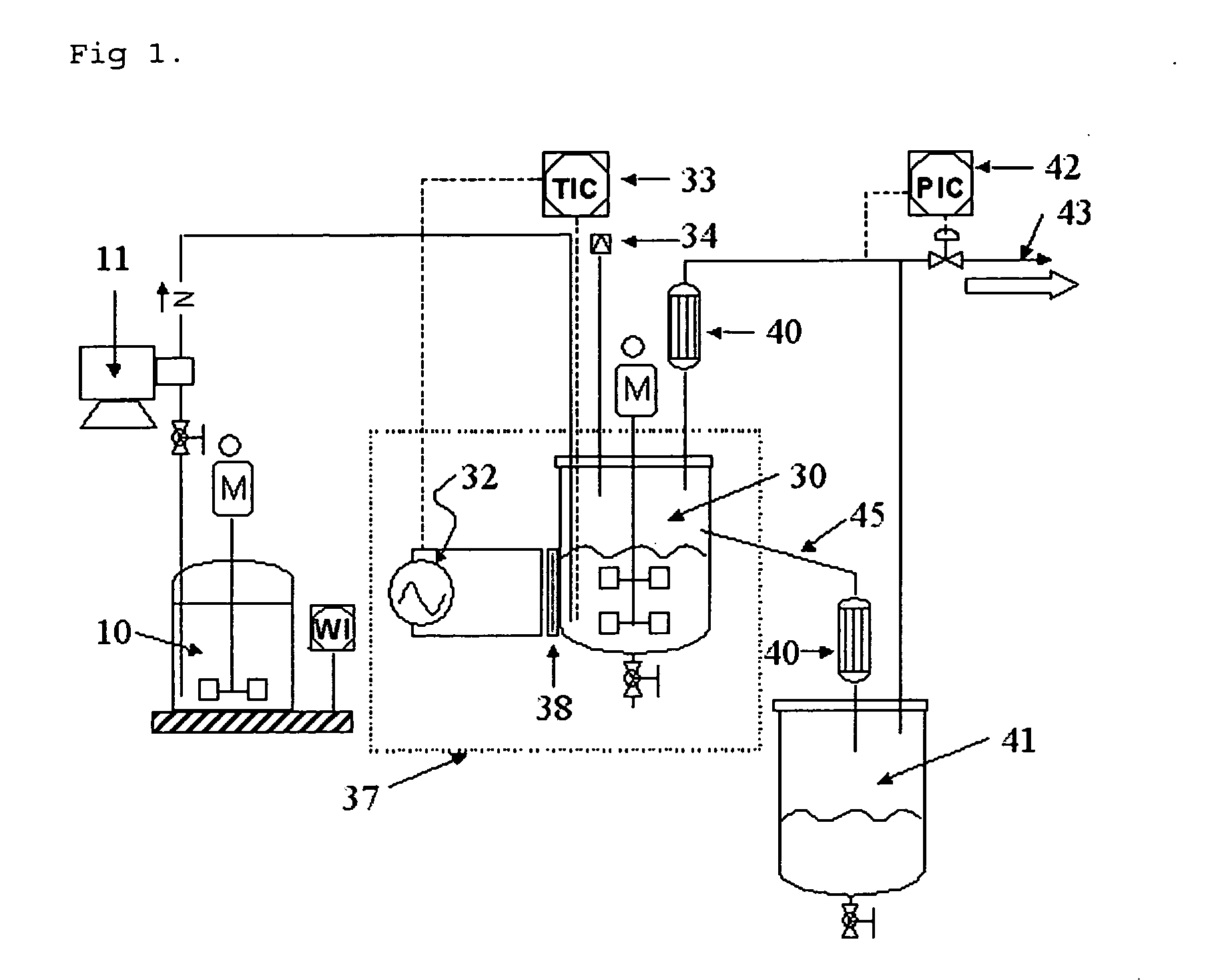Method and apparatus for the continuous preparation of porous materials and mixed metal oxides using continuous stirred reactors
a technology of stirred reactor and porous materials, which is applied in the direction of metal/metal-oxide/metal-hydroxide catalyst, physical/chemical process catalyst, separation process, etc., can solve the problems of reactor explosion, low productivity, and inability to continuously prepare porous materials by electric heating technology, etc., to achieve stable preparing process and easy control of temperature and pressure
- Summary
- Abstract
- Description
- Claims
- Application Information
AI Technical Summary
Benefits of technology
Problems solved by technology
Method used
Image
Examples
example
Example 1 (SAPO-11)
[0041] 1) Preparation apparatus: the apparatus shown in FIG. 1 has been used to prepare a material comprising porous materials and mixed metal oxides. The reactants can be metered into mixtures in the reactant drum 10, and the mixtures can be transported to the continuous stirred type reactor 30 in which the microwave is radiated, the cooler 40, and the product drum 41 by using the slurry pump 11. Also, a thermostat was mounted to measure the temperature of the mixture of the reactant and the product in the continuous stirred type reactor 30. The temperature of reaction can be controlled, by adjusting the electric power of the magnetron, and the rupture 34 was mounted to prevent the rapid increase of the pressure by discharging the pressure automatically to thereby protect the increase of the pressure and the explosion of the reactor. The sight glass 38 made of glass was mounted to radiate the microwaves in the continuous stirred type reactor 30, and the mesh 37 ...
example 2 (
AlPO-11)
[0044] Reaction was performed similarly to example 1, however, reactant without the silicon component was used as the raw material. In other words, composition of the reactant was made to be Al2O3:1.0P2O5:1.5DPA:100H2O, and it was possible to know that AlPO-11 was obtained from the x-ray diffraction pattern (confer FIG. 2b). Detailed condition of the experiment and property of the obtained material are summarized in table 1.
[0045] Comparative Example 1 (SAPO-11)
[0046] Experiment has been performed similarly to example 1, however, the batch microwave reactor was used instead of the continuous reactor. In other words, the SAPO-11 porous material was synthesized by charging the reactant of 40 g into the Teflon reactor and closed tightly, and mounting it to the microwave reactor (Mars-5, CEM corporation), and then the temperature of the reactor being increased to 180° C. and maintained for five minutes. From the x-ray diffraction pattern (confer FIG. 2c), it was possible to kn...
example 3 (
AlPO-5)
[0048] Reaction was performed similarly to example 1, however, reactant without the silicon component was used as raw material, and the triethylamine (TEA) was used as the template. That is, the composition of the reactant was made to be Al2O3:1.05P2O5:1.2TEA:100H2O, and the residence time in the reactor was maintained to be twenty minutes. It was possible to know that AlPO-5 was obtained from the x-ray diffraction pattern. Detailed condition of the experiment and property of the obtained material are summarized in table 1.
PUM
| Property | Measurement | Unit |
|---|---|---|
| temperature | aaaaa | aaaaa |
| size | aaaaa | aaaaa |
| size | aaaaa | aaaaa |
Abstract
Description
Claims
Application Information
 Login to View More
Login to View More - R&D
- Intellectual Property
- Life Sciences
- Materials
- Tech Scout
- Unparalleled Data Quality
- Higher Quality Content
- 60% Fewer Hallucinations
Browse by: Latest US Patents, China's latest patents, Technical Efficacy Thesaurus, Application Domain, Technology Topic, Popular Technical Reports.
© 2025 PatSnap. All rights reserved.Legal|Privacy policy|Modern Slavery Act Transparency Statement|Sitemap|About US| Contact US: help@patsnap.com



